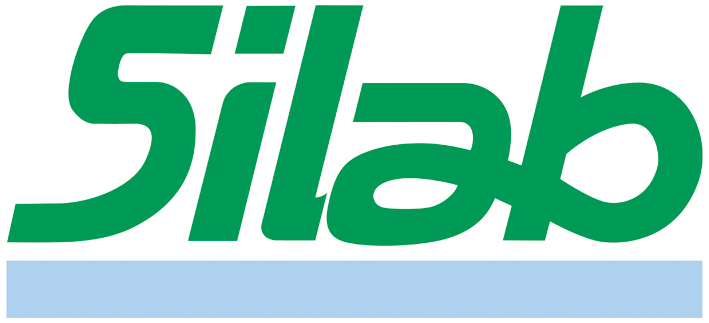In a world with an ageing population, many consumer needs are still not being met by skin care products. Katerina Steventon takes a look at some of the ingredients and technologies that are taking a step in the right direction
The anti-ageing skin care sector has been performing well (eg retail sales reached £343m in 2010 in the UK, accounting for 39% of all facial skin care) and is set to grow exponentially over the next decade.[1] This growth is driven by increasing consumer demand as well as new technology and delivery systems available to the skin care industry. Mintel market research confirms that the pressure on women to look youthful for as long as possible, despite anti-age discrimination legislation, is greater than ever. Their biggest concerns are the ageing of the entire face, lines and wrinkles (especially in the eye area), sagging and age spots.
Anti-ageing skin care offers an attractive solution for a mature consumer. However, with Botox, fillers and surgical facial enhancement as today’s benchmarks, the focus on the efficacy of anti-ageing skin care is paramount. Surgical references and imagery are often used in skin care marketing and innovative active ingredients are offered as an alternative to mimic the effect of advanced cosmetic procedures.[2]
Superior performance
Over the last 20 years, different groups of actives have enjoyed popularity and later faded into the background in the search for the anti-ageing magic bullet. To name just a few, these included the resurfacing alpha hydroxy acids (AHAs), antioxidants, peptides and enzymes. Their efficacy was initially promising but proved not to be the ultimate answer to resolving all consumer concerns related to skin ageing.
As research in the area of skin metabolism advanced, skin care manufacturers began to understand the many important, parallel processes involved in skin ageing that need to be addressed with multiple strategies and they strived to formulate according to the skin’s physiological principles. To become successful, skin care anti-ageing strategies have to impact on both the epidermal and dermal layer of the skin as ageing affects them both. The epidermal cells divide more slowly, slowing down the epidermal renewal and shedding and the skin appears dull and ashy. Epidermal pigmentation changes lead to uneven skin tone. The dermis becomes thinner with age, its structural network of collagen and elastin fibres is degraded, with consequent loss of elasticity, and the appearance of lines, wrinkles and sagging.
Moisturisers are the most important anti-ageing skin care products used on a regular basis, ideally twice a day. Moisturisers act primarily on the epidermis – they affect many properties and functions of the top epidermal layer, the stratum corneum. Their efficacy can be readily measured these days by using modern non-invasive analytical methods. In response to the application of an efficient moisturiser the stratum corneum changes its structure; its thickness, water gradient and hydration increase.
However, not all moisturisers perform well. The stratum corneum barrier function is a composite of its total structure and thickness, and commercially available moisturisers have been reported to have positive or negative effects on the skin barrier function depending on the ingredients used in the formulation. Only certain ingredients promote long-term hydration by affecting epidermal lipogenesis and strengthening of the stratum corneum barrier function.[3]
As current research implies, formulating efficacious anti-ageing moisturisers requires multiple strategies and the optimised formulation should incorporate a combination of specific types of ingredients; it is their synergy that delivers the anti-ageing performance. It has been well accepted that UV protection and mainstream moisturisation principles are key in the formulation of functional skin care products. However, more complex and multifaceted strategies have to be adopted to boost the anti-ageing efficacy and these involve the particular active ingredient types (see box above).
Each year new ingredients are launched to increase the revenue of skin care by providing new actives and applications for the skin care industry. New active ingredients at this year’s in-cosmetics, the biggest ingredient supplier exhibition aimed at finished product manufacturers in Europe, brought to the forefront recently developed technologies. Anti-ageing actives require long-term studies to prove their efficacy and the data provided by ingredient suppliers often rely on in-vitro/ex-vivo assessment in the first instance.
Boosting anti-ageing efficacy
• The use of UVA and UVB sunscreens to combat photoageing
• Key technologies that optimise skin moisturisation: emollients to ensure a smooth skin surface; occlusive agents to provide a physical barrier and prevent epidermal water loss; humectants to attract and bind water to the superficial epidermal layers, skin identical lipids, ie ceramides, to increase the rate of barrier repair and exfoliants to remove the superficial epidermal layers
• Free radical scavenging actives, antioxidants
• Actives supporting the key dermal functions: a) to stimulate the production of structural biopolymers and/or b) to protect structural biopolymers against degradation and avoid loss of functionality
• Actives that impact on melanin formation and transfer in order to reduce skin pigmentation
Sunscreens & antioxidants
UV exposure and subsequent damage accelerates skin ageing – UV protection has been demonstrated to reduce wrinkles and skin inflammation. The need for both UVA and UVB protection has been highlighted. UVA penetrates the stratum corneum and damages skin cells by generating highly reactive free radicals. These cause DNA damage, protein denaturisation and lipid peroxidation, destructive processes at the cellular level that accelerate skin ageing.
One newly launched sunscreen active ingredient is Sunsafe Complex A9 [INCI: Octocrylene, avobenzone, ethylhexyl ethylhexanoate], introduced by Uniproma. It is a unique photostable combination of UVA and UVB absorbers presented in an inert solution. Easy to formulate with, the technology improves final product spreadability and absorption without leaving an oily feeling and is ideal for sun care emulsions and lotions. Caspaline 14, launched by ISP, is a synthetic peptide that boosts the expression of caspase 14, an enzyme that is critical in the skin defence system against UV exposure. Studies have shown that skin deficient in caspase 14 experiences significantly more damage than normal skin when exposed to UVB irradiation.
The protective capacity of both the epidermis and the dermis against free radical damage is reduced with ageing. The use of antioxidants in skin care provides the most effective approach against the degenerative effect of free radicals on the skin. Antioxidants reinforce the skin’s own protective mechanisms by quenching free radicals, protecting DNA, protein and lipid degradation and reducing inflammation. Antioxidants also play a role in stabilising other active ingredients in the formulation, particularly unsaturated oils with a high content of essential fatty acids and UVA filters that might be degraded by UV light.
This year, IRB SpA introduced Marrubium vulgare stems G, [INCI: Marrubium vulgare meristem cell culture], a biotechnology-derived active ingredient that contains 20% of Marrubium vulgare cultured stems cells and forzythozide B, phenylpropanoid, a compound that protects the plant from environmental stress. Marrubium vulgare stems G delivers a multiphase protection to the skin – immediate protection through scavenging free radicals and long-term protection through supporting the skin’s own defence systems. The active is sourced by in vitro cultivation of plant cells in an ecological and sustainable process to ensure a superior level of standardisation and a good safety profile.
Actipone Superveggies supplied by Symrise AG is a new line of botanical active ingredients combining various vegetable antioxidant solutions. These are sourced from asparagus, broccoli, spinach, zucchini, artichoke, beetroot and pumpkin. SymFinity 1298, [INCI: Echinacea purpurea extract] from Symrise is a natural complex that strengthens the resilience of skin cells to stress and protects the skin against environmental damage. Multifunctional benefits include activation of the cell’s life prolongation protein (SIRT-1), anti-irritant and antioxidant properties. This active ingredient has shown good results in human studies ex vivo, particularly in reducing age spots and preventing uneven complexion.
Moisturising actives
Moisturising actives act on the epidermal level by smoothing, occluding and hydrating or actively stimulating epidermal processes and strengthening its barrier function. Optimal hydration leads to a visibly fresher, smoother and more radiant skin.
Hyadisine [INCI: Pseudoalteromonas ferment extract (proposed)], from Lipotec is a biotechnology derived polysaccharide sourced from a marine bacterium found in Brittany. The technology offers primarily epidermal hydration. Microorganisms inhabiting complex marine ecosystems develop unique chemical structures and activities to protect themselves from harsh conditions, such as desiccation stress or nutrient depletion. Hyadisine, rich in glucuronic acid, demonstrated a water retaining capacity higher than hyaluronic acid, a highly hydrating polymer, composed of the glucuronic acid monosaccharide, in vitro. In vivo Hyadisine (in a 1% cream formulation) showed efficacy in improving overall skin appearance, demonstrating long-term moisturising and immediate anti-wrinkle effects. There was a significant reduction of lines by 11.1% in only two hours after the first application. The biotechnology process enables sourcing this active ingredient at a high level of precision and reproducibility without damaging any natural resources.
Vitryxx HA Serum supplied by Schott is also a new active ingredient that hydrates epidermal structures. It is based on a patented formulation of hyaluronic acid and bioactive glass. Its benefits include high hydration levels, reduced redness and reduction of wrinkles. It is an effective delivery system, is easy to formulate with and has a good stability profile.
Organic Biophytosebum [INCI: Olive oil decyl esters (and) squalene] from Sophim is a natural emollient with enhanced skin moisturising properties. It is composed of unsaponifiables, squalene and liquid wax esters from organic olive oil and certified by Ecocert. The technology restores the lipid layer and the intercellular cement of the stratum corneum. Clear, transparent, deodorised and with a dry texture and velvety silicone-like feel, it is an emollient and a carrier for active ingredients. It is non-comedogenic, non-irritant and compatible with the skin’s natural lipids. The organic grade is obtained through ecological sourcing from sustainable and renewable sources.
ISP’s Lipigenine is an active ingredient that supports the epidermal barrier function. This active ingredient has a demonstrated ability to boost skin lipid synthesis and restore lipid content in the stratum corneum following barrier damage by a detergent in vivo. The technology is positioned for skin care products that benefit consumers with dry and sensitive skin type and repairs or counteracts the drying effects of daily exposure to detergents and soaps.
Caviar is one of only a few acceptable animal-derived ingredients in skin care. Aquabeautine XL offered by Aqua Bio Technology is an active ingredient that contributes to epidermal cell shedding and renewal. It is a globally patented marine protein solution derived from the hatching fluid of salmon roe (red caviar). It is a bio-specific and highly selective exfoliant with added moisturising and soothing properties tested in sunburned skin. It also contains a unique protease that gently removes superficial epidermal cells.
The discovery of this material originates from salmon hatchery workers reporting that the skin on their hands became soft and felt smooth when exposed to the ice-cold hatching fluid from salmon. It was an unexpected result, as swollen, red and chapped skin on the hands would be normal after prolonged exposure to cold water. The technology has been proven in vitro and in vivo to render comparable results to exfoliating AHAs. These work by reducing cohesion between superficial epidermal cells. In vitro testing showed that the efficacy of Aquabeautine XL in 24-48 hours is comparable to one hour exposure to alpha and beta hydroxy acids but Aquabeautine XL does not need to be removed or inactivated after the application. The technology has a good safety profile with no adverse reactions after single and repeated exposure in vivo. It is a natural and sustainable alternative to exfoliation by AHAs. Stable, unlike other proteases, active over a broad pH range and easy to formulate due to its colourless and odourless properties, it is suitable for various skin care applications, including for sensitive skins.
Reforcyl introduced by Rahn AG is a combination of active ingredients that promotes the regeneration of the epidermal barrier and includes the Far East immortality herb Gynostemma pentaphyllum, Rock Rose (Cistus incanus) and glutamine. Gynostemma pentaphyllum contains gynosaponins that activate the Liver X Receptor (LXR) in epidermal cells, stimulate epidermal lipid synthesis and repair the integrity of the skin barrier. The Rock Rose contains antioxidant polyphenols that neutralise endogenous and exogenous free radicals and strengthen the reduced antioxidant defence system of mature skin. Glutamine, an amino acid, provides energy to strengthen the reduced metabolism of mature epidermal cells.
In vivo results of a four-week study in 20 volunteers showed that regular application of Reforcyl, in a 3% cream formulation, has a positive effect on skin hydration, firmness, smoothness, elasticity and the appearance of wrinkles in facial skin. Claims substantiated by subjective statements obtained in a controlled user trial include reduced itchiness and soothing of the skin, firming and strengthening the skin as well as improvement of the appearance of mature skin. In vitro studies demonstrated the activation of the LRX and strengthened epidermal lipid synthesis. In vivo studies confirmed visible improvement in crows’ feet, skin hydration, firmness, smoothness and elasticity.
The ability of the skin to resist infection depends on its production of antimicrobial peptides (AMP). These cationic peptides are produced by epidermal cells and interact with the anionic components of the microbial membranes to disrupt their structure. AMPs are important constituents of the skin’s antimicrobial barrier and influence the skin permeability function; stimulating the activity of antimicrobial peptides in damaged skin can lead to accelerated restoration of skin barrier function. Defensamide [INCI: Methyl caprooyl tyrosinate], introduced by NeoPharm is an antimicrobial peptides stimulant. It is a natural amino acid derivative with proven efficacy in atopic eczema clinical trials and is said to be a safe and effective active ingredient for moisturisers targeting mature consumers with sensitive skins.
Peptides, amino acid polymers linked by peptide bonds, are currently the most popular anti-ageing ingredients and their specific claims focus primarily on the dermis. However ISP’s Survixyl IS is a new peptide formulated to support epidermal metabolism and preserve cells from environmental stress. This active ingredient boosts the environment critical to maintaining a healthy population of epidermal stem cells.
Extracellular matrix

La Biosthetique
Fibroblasts, the major cell type in the dermis, are cells responsible for the synthesis of structural proteins (eg collagen, elastin, reticulin, fibrillin) and the extracellular matrix. With ageing, fibroblasts show decreased metabolic capacity that contributes to a compromised dermal integrity and reduced elasticity of the skin and plays a role in the visible signs of skin ageing.
Silab’s Retilactyl D is a natural active purified from black pepper berries. Rich in a-glucans and rhamnogalacturonans, this active ingredient targets the reticular dermis that is particularly affected by photoageing. It boosts cell adhesion, contraction and migration as well as optimising the expression of proteins of the extracellular matrix. Clinical benefits include increased density and firmness of facial skin as well as remodelling facial definition. The technology is positioned for use in anti-ageing and firming facial skin care.
Esaderm10, [INCI: Aqua (water), hydroxypropylguar] from Lamberti is a patent pending liquid solution of low molecular weight hydroxypropyl guar gum. As a natural polysaccharide, guar gum improves elasticity of the skin and is said to correlate to the quantity and quality of the skin’s own elastic fibres.
Melanin production & transfer
Citrolumine developed by Cosmetochem AG is a technology based on liposome-encapsulated flavonoids extracted from citrus fruits. A safe, plant-derived active ingredient, it has shown efficacy in reducing age spots, brightening skin tone and increasing overall skin luminosity in both in vitro and in vivo studies.
In vivo, a two-month evaluation of the brightening and anti-ageing effects of Citrolumine (in a 1% lotion formulation) applied twice daily was carried out on six volunteers. Reduced pigmentation of age spots and brighter skin tone was assessed by objective instrumental measurement. It demonstrated 9.2% lighter age spots and 5% brighter skin tone in Caucasian facial skin. Citroflavonoids have been reported to be potent antioxidants and anti-inflammatory agents. This active ingredient has been developed for use in anti-ageing products that brighten the skin tone and increase skin radiance.
Regu-Fade is another brightening active developed by DSM Nutritional Products. Described as a safe, nature identical resveratrol, this active down-regulates key steps of melanin biosynthesis and attenuates skin pigmentation via multiple mechanisms. The application results in noticeably brighter and younger looking skin. Resveratrol has recently been of great interest as it has an activity on the SIR-II gene, which research suggests is responsible for preserving cell longevity.
The stakes are high for the skin care industry to deliver high performance anti-ageing products. Consumer needs in this area have not been met so far and their high expectations often result in disappointment. Europe’s baby boomers are now in their 60s, and by 2013 the number of people aged over 55-65 will grow substantially. Mintel identified that the use of anti-ageing skin care products tends to drop off noticeably once consumers hit their mid 60s, so the challenge for the skin care industry is to make products that are both efficacious and appealing for the mature consumer. Getting the most from new formulations means formulating according to the skin’s physiological principles, with optimised delivery and adequate concentrations of active ingredients.
Author
www.katerinasteventon.co.uk
References
1. Mintel, Facial Skincare Europe, March 2011
2. Mintel, Anti-ageing around the globe, in-cosmetics 2011
3. Crowther JM et al, Measuring the effects of topical moisturisers on changes in stratum corneum thickness, water gradients and hydration in vivo, Br J Dermatol, 159 (3), 567-77 (2008)










